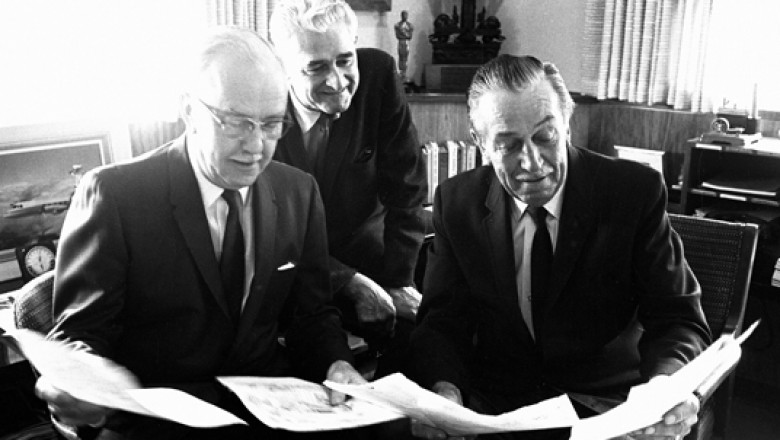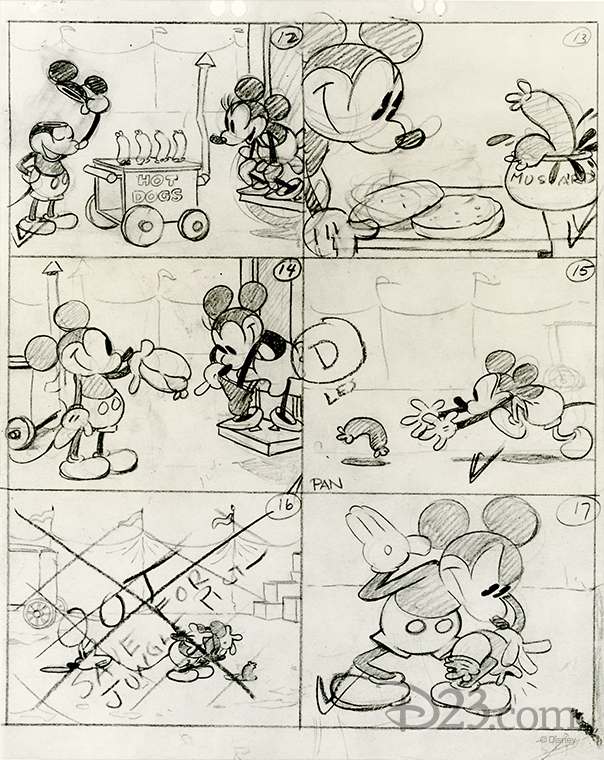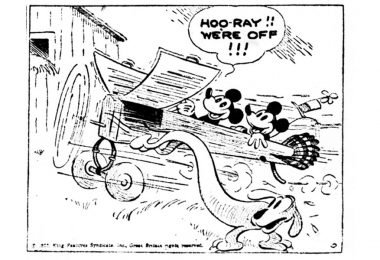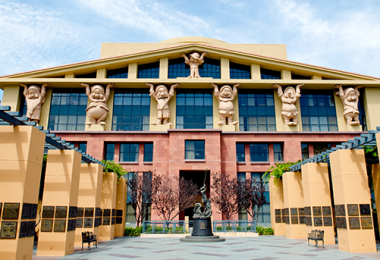By Jim Fanning
Before the storyboarding process was pioneered by the Disney Studios in the early 1930s, story sketches for animated shorts were often drawn comic-book style with several panels to a page. In 1966, when Walt Disney came across story sketches from one of the earliest Mickey Mouse cartoons—The Karnival Kid (1929), he shared the art with two Mouse masters who had worked side-by-side with the “Mousetro” himself in the giddy days of Mickey’s overnight Jazz Age success.
They were Ub Iwerks, the designer of the Mouse’s iconic graphic appeal, and at this time well established as the Disney Studios’ Oscar®-winning camera effects specialist; and Les Clark, the first of Walt’s legendary “Nine Old Men” to be hired, taken on at the Studio in early 1927, and—from Steamboat Willie (1928) to Fantasia (1940) and beyond—long-time Mickey master.
As the cartoon compadres scanned the sketches, most likely drawn by Ub, the Disney animated features of the 1960s, including the in-production The Jungle Book (1967) that took at least three years to get to the screen, were undoubtedly on Walt’s mind. “Boy, when you think of the details we get into these days to make a picture,” Walt marveled. “Why, we used to knock these things out every two weeks… well, no more than a month, anyway.”





